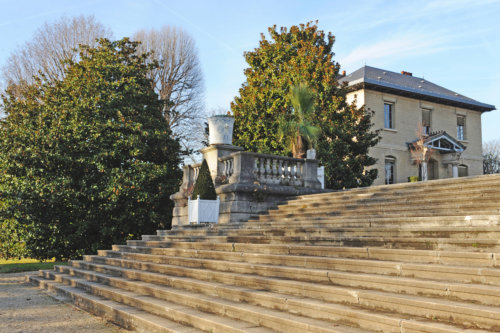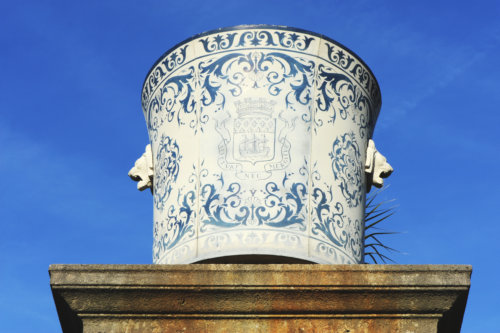
On The Historical Plants of Paris and The Fight To Save Serres d’Auteuil
It’s a place even most Parisians don’t know about: the Serres d’Auteuil (literally the ‘Greenhouses of Auteuil’) is one of Paris’ many secret treasures worthy of discovery. Located at the city’s doors, right outside the posh 16th Arrondissement, this botanical vault stands discreetly behind high walls, its closest neighbor– the world-renown Roland Garros Tennis Stadium– having stolen the spotlight. But there have been outstanding plants growing on the grounds of Serres d’Auteuil for over two hundred years, and as part of Paris’ most iconic and oldest greenhouse, they are due for a revival.
The Royal Days
The first one who guided this land toward its grandiose destiny was nothing less than a king. Fascinated since his youngest age by plants and botanics– which then was one of the most fashionable sciences– Louis XV, who already was a frequent hunter in the close woods of Boulogne, bought the Chateau du Coq, the rooster’s castle built about a hundred years earlier by a Monsieur de Richelieu, maybe the Cardinal’s nephew, from banker Samuel Bernard. The estate, which already encompassed a large park including grottos, follies and other greenhouses, supposedly held its name from its rooster-shaped weather vane.
The king immediately hired a head gardener, but the the estimated price to transform the garden into what he envisioned was so high that he waited another two years to start the project. Hyacinths, anemones, buttercups, tulips and other marigolds– in other words, nothing very exotic– were then grown in huge quantities on the premise. If Louis XV was reported to personally follow the project’s progress, the public finances suggest that he lost interest for its scientific side and used the property for more personal purposes, throwing parties and entertaining under the fake name of Baron de Gonesse— a pseudonym among many others, borrowed from François I– and mentioned in Madame du Barri’s memoirs. But after his death in 1774, the estate, way too expensive for the crown to maintain, changed hands.
The Tormented XIXth Century
Thanks to a fortune made with rhinestones, which they had invented and sold for over fifty years in the heart of Paris, the Stras family acquired the castle and its magnificent gardens. Quite an achievement for the heirs to George-Frederic, born in Alsace, who had mastered the art of counterfeiting diamonds and other gems so well that he was appointed Jeweler to the Crown. But his descendants’ faith was not as magnificent, only two years later, when they went bankrupt and were forced to sell the property. The castle was only rediscovered in 1861, when a successful baker named Erlanger dismantled the property in a vast real estate operation.
Less than a decade prior, Napoleon III assigned prefect Haussmann a mission: reorganizing Paris and turning it into the modern city it deserved to be. In 1852, the emperor had donated the Boulogne woods to the city of Paris as he orchestrated radical transformations. Soon, in those 846 hectares, Parisians were able to enjoy a huge English garden with artificial rivers, ponds, and various chalets.
In 1860, Auteuil, which was then a charming suburban village, became Paris’s 16th Arrondissement. It was the perfect juncture for the banker Erlanger to sell his land for a great profit. By the end of the XIXth century, thanks to developers, bankers, and architects’ combined efforts, the transformation was almost complete. The 16th had become the new place to be for anyone who was anyone– the perfect mix of modern accommodation and bourgeois leisure. And by the 1890’s, the IIIrd Republic had been in place for twenty years and the French Revolution just turned one hundred, and so was celebrated in the most spectacular Universal Exhibition to date. The world was blown away by the Eiffel Tower, and Paris had become known, now more than ever, as the City of All Lights.
The City’s Nursery
What is left of the Chateau du Coq’s old grounds (over 9 hectares) is now owned by the city, which is soon to put a young architect in charge of restoring its original mission. (This architect, Jean-Camille Formigé, is a disciple of Baltard and Eiffel, an expert on very fashionable metal-structure buildings, and Architect-in-Chief for Paris’ gardens and the city of Arles.) The realization of the “Fleuriste Municipal” (Municipal nursery), will keep him busy for over two years as he works to create a terrace, a park, and some magnificent greenhouses in the purest Belle Époque fashion. Among the five greenhouses, all built with a cast iron, the central one is the most spectacular– what some are calling an an architectural feat. Divided into three sections, the greenhouse unfolds in three different climates: a hot and humid tropical garden, a slightly drier palm grove, and a colder orangery.
Thanks to its two annex greenhouses and wooded park, this unique garden still withholds an incredible collection of more than 6000 plants. Succulents and Canary palm trees, specimens from Sahel or New Caledonia, over 550 types of orchids, caladiums and ferns have all found a welcoming home within its climes. The park features a French parterre, of course, but also a Japanese garden. It holds rare specimens, including a living fossilized ginkgo biloba from China, a caramel tree whose smell initiates in Autumn, a Chinese walnut– the park’s highest tree!– as well as Indian lilac and a pair of incredible Magnolia Grandiflora. The Bacchanales fountain and its beautiful haut-relief is also not to be missed.
But the most important artwork of the ensemble is so discreet it that might not appear to those not looking for it. Through the bushy vegetation on the terrace’s retaining wall, one can see fourteen scary, funny, and fantastic silver faces, staring at the garden and its visitors. (These masques, in galvanized cast iron, are called “mascarons”, and were moulded by no other than the great Auguste Rodin for the Trocadéro fountain, which will be reproduced for Auteuil.)
The Challenges of Modern Urbanism
Between 1898 and 1968, the garden relentlessly supplied Paris’ Municipal gardens with flowers. But it faced its first setback in 1968, when the construction of the peripheral boulevard– the circular highway serving Paris– rid the garden of a third of its total surface, causing the nursery to move to Rungis and Fresne. Today, even though the facility has been listed as a Historic Monument since 1998, it faces yet another challenge from its next door neighbor.
In 2011, Roland Garros and the French Tennis Federation, supported by Paris City Council and the mayor, initiated a far-reaching expansion project in order to expand the tennis stadium from 8.5 hectares to 13 hectares, at the expense of both the park and the greenhouses. Despite various protests– a committee was formed, the garden received support from local and international personalities, over 70,000 signatures were gathered on a petition (which is available in English to sign here), and years of lawsuits– the outcome is still not optimistic. A final court decision was expected by the end of 2016, upon a copyright trial filed by Fromigé’s decedents, but today the odds are against the garden’s integrity. So, for those wanting to discover the garden and its greenhouses in the way they were originally conceived, my advice would be to hurry up.





































